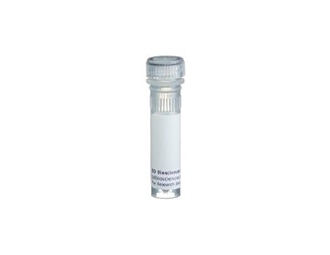-
Training
- Flow Cytometry Basic Training
-
Product-Based Training
- BD FACSDiscover™ S8 Cell Sorter Product Training
- Accuri C6 Plus Product-Based Training
- FACSAria Product Based Training
- FACSCanto Product-Based Training
- FACSLyric Product-Based Training
- FACSMelody Product-Based Training
- FACSymphony Product-Based Training
- HTS Product-Based Training
- LSRFortessa Product-Based Training
- Advanced Training
-
- BD FACSDiscover™ S8 Cell Sorter Product Training
- Accuri C6 Plus Product-Based Training
- FACSAria Product Based Training
- FACSCanto Product-Based Training
- FACSLyric Product-Based Training
- FACSMelody Product-Based Training
- FACSymphony Product-Based Training
- HTS Product-Based Training
- LSRFortessa Product-Based Training
- United States (English)
-
Change country/language
Old Browser
This page has been recently translated and is available in French now.
Looks like you're visiting us from {countryName}.
Would you like to stay on the current country site or be switched to your country?




CD80 expression on spleen cells. 72-hour LPS-stimulated LOU splenocytes were simultaneously stained with FITC-conjugated anti-rat CD45RA mAb OX-33 (Cat. no. 554883) and biotinylated mAb 3H5, followed by Streptavidin-PE (Cat. no. 554061). Viable lymphocyte blasts are represented. Flow cytometry was performed on a BD FACScan™ flow cytometry system.


BD Pharmingen™ Biotin Mouse Anti-Rat CD80

Regulatory Status Legend
Any use of products other than the permitted use without the express written authorization of Becton, Dickinson and Company is strictly prohibited.
Preparation And Storage
Recommended Assay Procedures
Since this antigen is expressed at low density, it may be desirable to amplify staining by using a biiotinaylated second-step reagent followed by a "bright" third-step reagent, such as Streptavidin-PE (Cat. no. 554061).
Product Notices
- Since applications vary, each investigator should titrate the reagent to obtain optimal results.
- Please refer to www.bdbiosciences.com/us/s/resources for technical protocols.
- Caution: Sodium azide yields highly toxic hydrazoic acid under acidic conditions. Dilute azide compounds in running water before discarding to avoid accumulation of potentially explosive deposits in plumbing.
Companion Products

.png?imwidth=320)
.png?imwidth=320)
The 3H5 antibody specifically recognizes CD80 (B7-1), a member of the Ig superfamily of transmembrane proteins. CD80, a ligand for CD28 and CD152 (CTLA-4), is one of the accessory molecules that plays an important role in T cell-B cell costimulatory interactions. CD80 is predominantly expressed on antigen-presenting cells. It can be induced on splenic B cells by in vitro polyclonal activation such as LPS treatment. 3H5 mAb is reported to block the costimulatory function of rat CD80 and to immunoprecipitate CD80 from Lewis-S1 cell lysates.
Development References (3)
-
Bluestone JA. New perspectives of CD28-B7-mediated T cell costimulation. Immunity. 1995; 2(6):555-559. (Biology). View Reference
-
Damoiseaux JG, Yagita H, Okumura K, van Breda Vriesman PJ. Costimulatory molecules CD80 and CD86 in the rat; tissue distribution and expression by antigen-presenting cells. J Leukoc Biol. 1998; 64(6):803-809. (Biology: Immunoprecipitation). View Reference
-
Maeda K, Sato T, Azuma M, Yagita H, Okumura K. Characterization of rat CD80 and CD86 by molecular cloning and mAb. Int Immunol. 1997; 9(7):993-1000. (Immunogen). View Reference
Please refer to Support Documents for Quality Certificates
Global - Refer to manufacturer's instructions for use and related User Manuals and Technical data sheets before using this products as described
Comparisons, where applicable, are made against older BD Technology, manual methods or are general performance claims. Comparisons are not made against non-BD technologies, unless otherwise noted.
For Research Use Only. Not for use in diagnostic or therapeutic procedures.
Report a Site Issue
This form is intended to help us improve our website experience. For other support, please visit our Contact Us page.